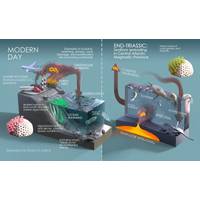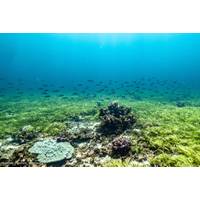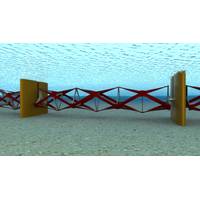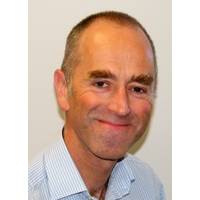
Trapped Wave Mystery Solved
Using a new type of satellite altimetry, a study led by Oxford University has finally confirmed the theory that the cause of extraordinary global tremors in September - October 2023 was indeed two mega tsunamis in Greenland that became trapped standing waves.In September 2023, a bizarre global seismic signal was observed which appeared every 90 seconds over nine days – and was then repeated a month afterwards. Almost a year later, two scientific studies proposed that the cause of these seismic anomalies were two mega tsunamis which were triggered in the remote Dickson fjord in East Greenland by

Research: Study Pinpoints 'Twin Triggers' of Triassic Era Marine Life Extinction Event
Earth, but also what climatic changes we can expect moving forward as CO2 levels continue to increase.”This research, led by Curtin University and funded by the ARC, was conducted in collaboration with researchers at the University of Southampton, Lahmont-Doherty Earth Observatory, MIT, and Oxford University. Dr Fox did the research as part of his PhD studies at Curtin and is now at Khalifa University.The full research paper, ‘Two-pronged kill mechanism at the end-Triassic mass extinction’, was published in Geology and can be found online here

Shrinking Sea Meadows Store More Carbon Than Forests. Scientists Race to Track What’s Left
equivalent of a soccer field of these seagrasses every 30 minutes around the world, according to the U.N. Environment Program (UNEP). And scientists are now racing to take stock of what remains.“There are a lot of unknowns—even things as simple as how much seagrass we have,” said Oxford University earth observation scientist Gwilym Rowlands, who is helping the Seychelles government map the island nation’s seagrass and estimate how much carbon it stores.“If you look at the map data for seagrass, there are huge holes” in what we know.Seagrasses play a large role in regulating

Ocean Trash: Putting a Price Tag on "Cleaning up Tuna Nets and Flip Flops" on the Aldabra Atoll
Following a five-week clean-up on Aldabra Atoll, one of Seychelles’ UNESCO World Heritage Site, where 25 tons of marine plastic litter was removed, researchers at Oxford University have estimated that the cost to clean up the entire island is approximately $4.68 million, requiring 18,000 hours of labor.This is the largest accumulation of plastic waste reported for any single island in the world.Their projected costs and recommendations were published recently in Nature Scientific Reports and it is reportedly the first time that the financial cost for removing the waste has been calculated.

Boaty McBoatface Completes First Antarctic Mission
Weddell Sea during RV Polarstern cruise PS111 as part of the Filchner Ice Shelf System (FISS) Project – a collaboration involving leading U.K. research institutions including the NOC, British Antarctic Survey (BAS), Met Office Hadley Center, University College London, University of Exeter and Oxford University, and international partners including Alfred Wegener Institute (AWI), and University of Bergen (UiB). The AUV plays a critical role in the project that aims to investigate and describe the current state of the complex atmosphere-ice-ocean system.Boaty spent a total of 51 hours under the Antarctic

New CEO Takes the Helm at Cefas
in May this year. Taking up his new role September 7, Karsten brings a broad maritime background with command roles in the South Atlantic, Far East, Gulf and Mediterranean. In 2007 he was promoted to Commodore serving as Navy Command’s Deputy Commander Operations, followed by a year at Oxford University as the Royal Navy’s Senior Hudson Fellow researching Arctic geopolitics. In 2010 he was appointed as Commander British Forces Gibraltar, serving on the Rock for two years. Karsten was promoted to Rear Admiral in 2012. Before joining Cefas, he was U.K. National Hydrographer and Deputy

Tidal Energy Fence for UK’s Bristol Channel
Bristol Channel beckons for tidal energy scheme designed by Oxford University spin out Kepler Energy is bringing forward plans for a 30MW tidal energy fence that will be located in the Bristol Channel. The tidal energy technology, akin to a water mill and which will use carbon composite technology, has been developed by Oxford University’s Department of Engineering Science for deployment in shallower, lower velocity tidal waters around the U.K. coastline but also in overseas waters. Subject to planning and financing, the initial Bristol Channel 1-kilometer £143 million tidal fence

Teledyne Bowtech Names Beswick General Manager
; was previously Managing Director of Tritech International Ltd from 2008 having joined as Finance Director in 2007. Prior to joining Tritech, Beswick had spent most of his career in international roles within the specialist chemical industry. Simon is an engineering graduate and holds an MBA from Oxford University. Beswick succeeds Steve Bowring who leaves the company at the end of April having led the company since its foundation in 1989. Teledyne Technologies Incorporated acquired Bowtech in February 2015.
Aker Solutions Appoints Head of Industry & Investor Relations
. He earlier specialized as an analyst covering the chemicals sector for banks including Commerzbank, Morgan Stanley and Dresdner Kleinwort Benson. He will be based at Aker Solutions' London office and report to the company's chief financial officer. David Phillips has a BA in Chemistry from Oxford University and a PhD in Chemistry from Cambridge University. www.akersolutions.com

 August 2025
August 2025





